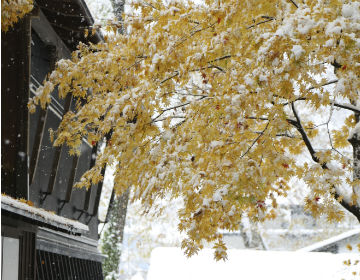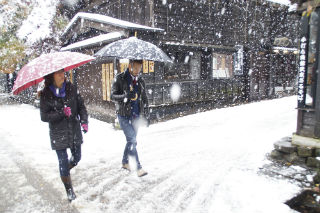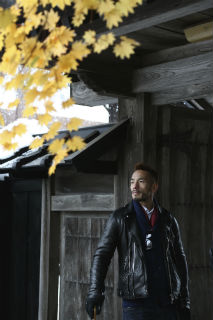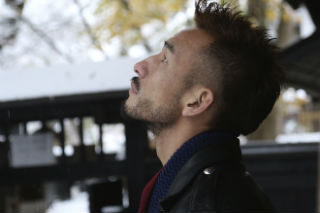Bukeyashiki street of Edo period
”Bukemachi Kakunodate,” is currently designated as Japan’s Traditional Preservation District. In the beginning of the Edo period in 1620, the Ashina clan conducted a large scale infrastructure improvement plan, and transferred the castle town entirely to this spot. Later, the town prospered under the reign of Northern house Satake clan. The current ”bukemachi” is the town that housed high, middle and central samurai. At present, 6 manors are open for exhibition. Renovated manors in the town make you feel as though you have warped in time. A tourist attraction visited by many, you can also see weeping cherry trees.

Built Especially for Samurai, Especially in the Snowy Region
We went on a tour viewing the Buke samurai manors. You first notice the thatched roofs. Because it is a heavy snow region, the roofs of the buke manors have thatched roofs, as tile roofs will not endure the weight of the snow. Standard onigawara are replaced by wooden ones. Another characteristic is the complex design of the houses, which starts from the entrance. The reason behind this is to prevent enemies barging in all at once during an attack. Indeed, if the houses were simple, it would make it easy for the enemies. With this complicated design, enemies will not be able to file in. Impressive.

Ambience Created by the Trees
Another characteristic is that all of the manors have a garden. You may think this is natural, being manors of high-ranking samurai, but this is not the case. The reason all the manors have gardens is because they needed a meeting place for people that were not invited inside the house. Therefore, the gardens all faced the common room. Convincing.
In addition to the weeping cherry trees mentioned earlier, there were many manors with oak trees in their gardens as well. Oak is said to be a symbol of prosperity of the house, and considered very important. Also seen were large fir trees, adding groves of green by the Japanese style buke manors, which stood with dignity. The green of the thicket is glittering to the eyes. When nonchalantly taking a stroll, you may feel the soft breeze from the Edo period whistle by.




